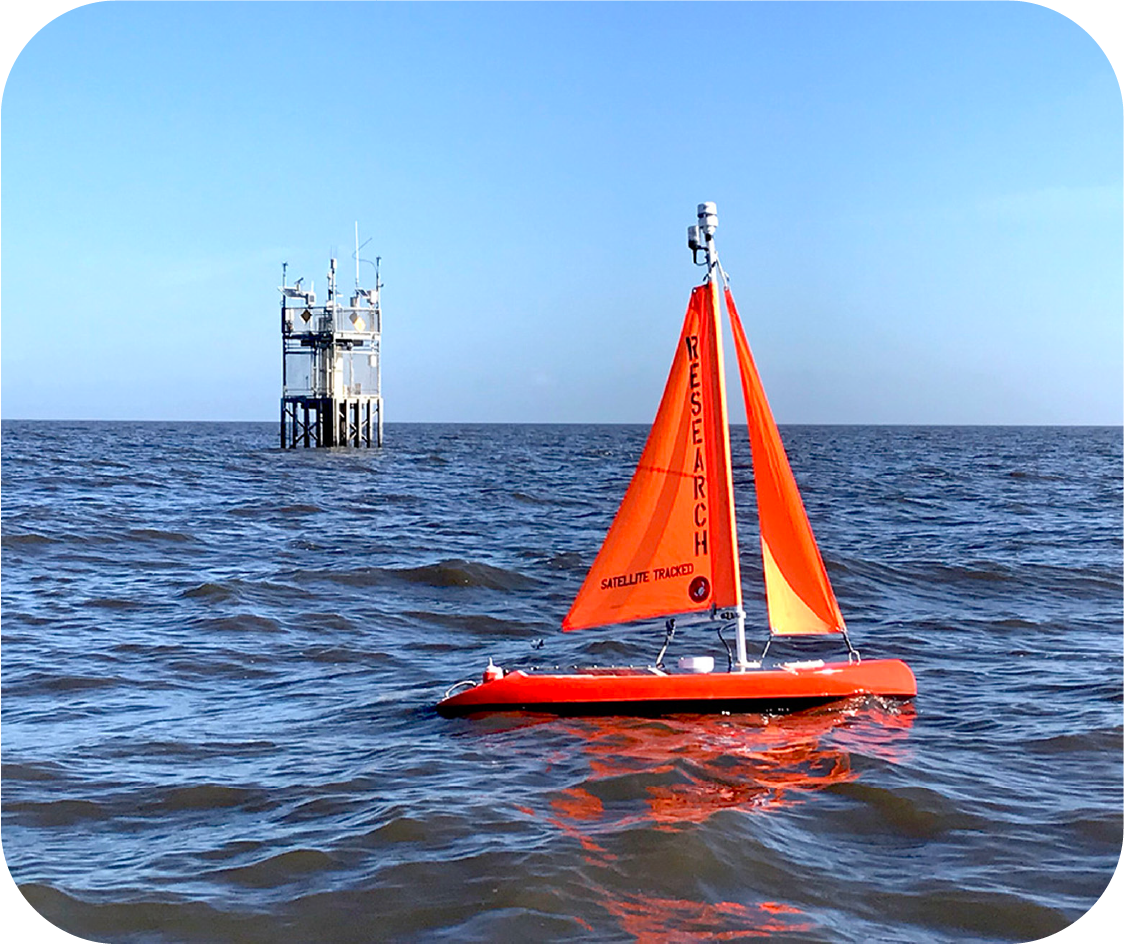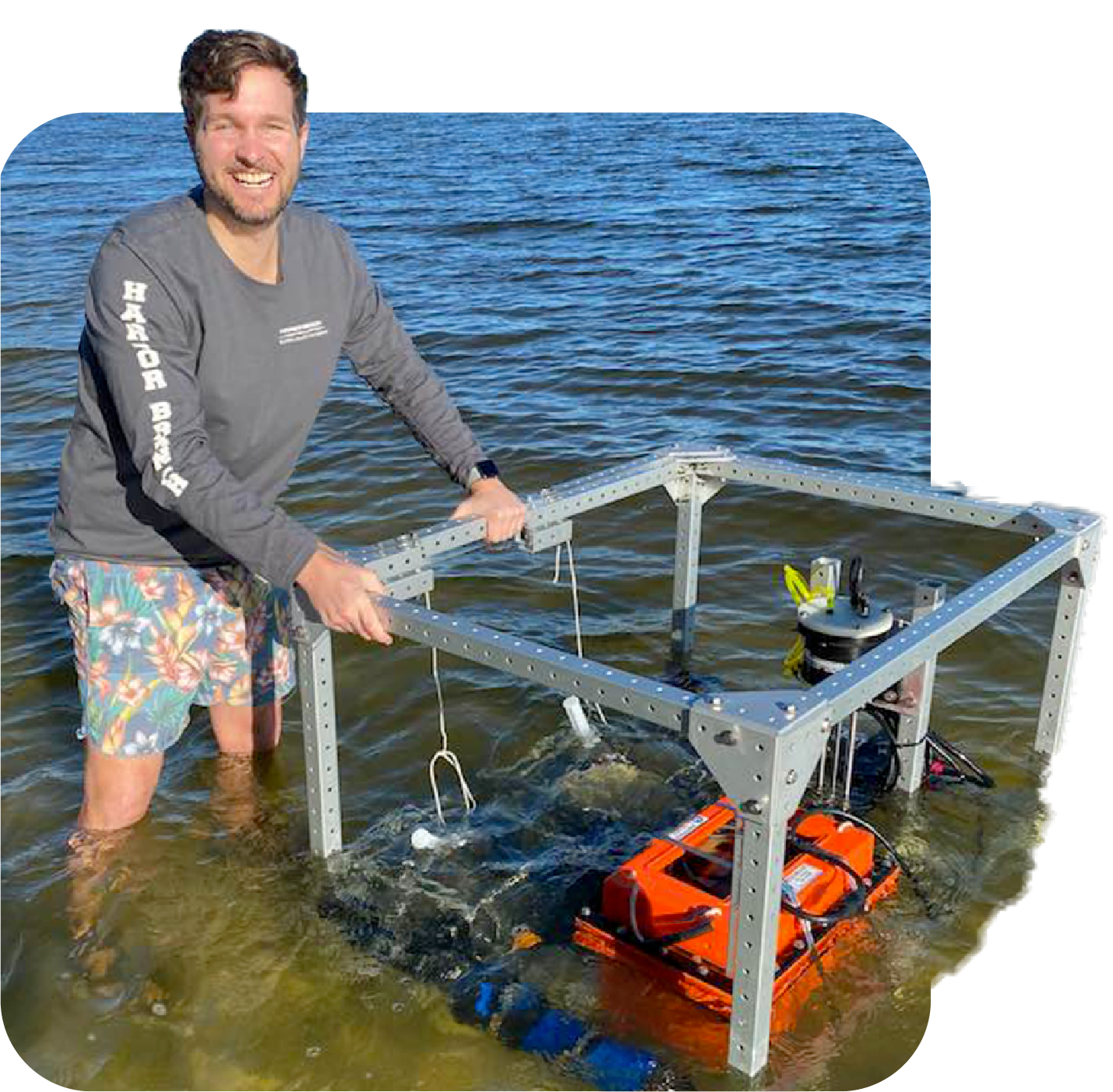Pockets of blue-green algae blooms pop up in Lake Okeechobee each year, coating the water’s surface in a toxic slime. But knowing where and when the algae appears remains a mystery. Better predicting and managing these blooms would reduce the threat on the environment, economy and human health.
Jordon Beckler, Ph.D., is leading a new multimillion dollar research effort to do just that. Beckler is an assistant research professor at FAU’s Harbor Branch Oceanographic Institute and a fellow at FAU’s Institute for Sensing and Embedded Network Systems Engineering.
The answer, he thinks, may lie in the lake’s mucky bottom. “Let’s just say the sediments are an important source of nutrients for the blooms — if not the most important,” Beckler said.
With a shoreline spanning 135 miles, Lake Okeechobee, also known as Florida’s Inland Sea, is the second-largest freshwater lake entirely within U.S. boundaries. Due to runoff from agriculture and development, every year the nutrient-rich waters lead to harmful algal blooms — a problem that will only get worse with warming water and changing climate. “Blooms will start earlier in the spring, last longer in the fall, and in the summer months, might grow like wildfire,” said Jim Sullivan, executive director of Harbor Branch and a member of the state’s Blue-Green Algae Task Force.
And, despite the fact that they occur every year, knowing when and where they will occur remains a mystery, he said. “We still don’t have a good handle on the specific environmental triggers for why and when we have bad algal blooms in Lake Okeechobee.”
One particular blue-green algae, called Microcystis aeruginosa, is of particular concern. It produces toxins linked to skin disease, respiratory distress, liver damage and liver cancer in both animals and humans. The blooms have led to beach and waterway closures. And when the water level is high in Lake Okeechobee, discharged water can also transport these blooms and excess nutrients into the St. Lucie Estuary and the Indian River Lagoon, as well as west coast regions, potentially feeding other toxic blooms, like red tide.
Microcystis is the focus of Beckler’s new multi-institute, collaborative project, called the Harmful Algal Bloom Assessment of Lake Okeechobee (HALO). While the state has existing monitoring programs, the team is augmenting this effort to better predict where and when the blooms will happen, by using highly innovative techniques to collect geochemical and biological measurements in the water and sediment. With that data, the team is using both a mechanistic, physics-driven model and a machine learning model to understand drivers and forecast future blooms. The project also includes a live, public web-based platform for visualizing the blooms: http://halo.gcoos.org/.
As the principal investigator of the Geochemistry and Geochemical Sensing Lab, Beckler’s specific interest is in the overall health status of sediments and their role in the blooms, something that has largely been underappreciated, he said. “We know what healthy water is, healthy air quality and healthy soil quality. But we don’t know about submerged sediments, even though they provide critical ecosystem services for aquatic organisms and vegetation.”
Sediments store nutrients and release them into the water, a process potentially exacerbated from storm events like hurricanes or warmer temperatures. And in Lake Okeechobee, the sediments hold phosphorous and nitrogen nutrients from many decades of runoff, called legacy nutrients.


Understanding Algae
The 2021 explosion of harmful algal blooms in Lake Okeechobee and the Saint Lucie Estuary in southeast Florida has been gaining attention because of impacts on public health, the environment, tourism and the economy.
FAU’s Center for Environmental Studies in the Charles E. Schmidt College of Science has a partnership with the U. S. Geological Survey’s Greater Everglades Priority Ecosystem Sciences Program and recently developed a series of online modules that help understand the science and challenges related to algal blooms.
To study sediments, Beckler will use two different benthic landers – think lunar lander – large platforms with sensors that sit at the bottom of the lake and measure the nutrients coming from the sediments. “I can count on one hand the number of studies that have deployed sensors to continuously and autonomously monitor sediment biogeochemistry for long periods of time, let alone for harmful algal bloom monitoring,” he said. “Compare this to the level of interest surrounding Internet-of-Things sensors for the purpose of monitoring soil conditions only in the last few years. In my mind, this is the type of application that has the potential to finally justify the societal and scientific recognition of the importance of sediments and their monitoring.”
As part of the HALO project, the team and collaborators will also be utilizing technology to understand how light affects an algae bloom’s growth, and are working with industry to develop the means to map out a bloom in two dimensions using an autonomous sailboat called Vela. The sailboat recently completed its first 10-day mission. Divers will also be collecting sediment cores from the bottom of Lake Okeechobee for subsequent lab analyses of nutrient dynamics.
“The collective level of innovative technologies assembled as part of HALO may certainly be a superlative in the current world of algal bloom and coupled environmental monitoring,” Beckler said.
Ultimately, these data will give Beckler and his team a better idea of what’s causing the blooms and why, so that managers can use that information to mitigate it effectively, Sullivan said, and apply that knowledge to other regions. “Because blue-green algal blooms aren’t just a problem for South Florida, they are an increasing problem around the globe. This goes well beyond the borders of Florida.” ⬥


